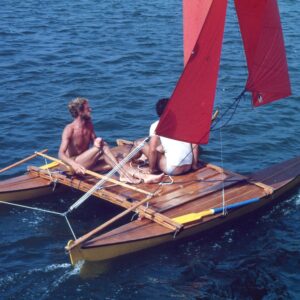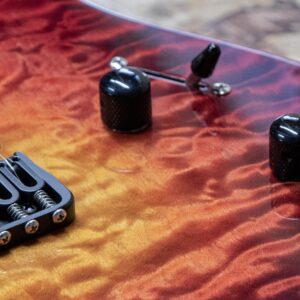Projects: My Project: an 18’ sea kayak By Duncan Riddle
Back to basics
I just completed the 38 week Boat Building Course at the Lyme Regis Boat Building Academy. Like several other students on the course, I’d spent several years in a corporate environment and was looking to get back to basics, working with traditional techniques and materials to create something with my own hands. I’ve always enjoyed anything to do with being on the water, canoeing, windsurfing and yachting so the Academy was a great opportunity to take my passion to the next level and develop the skills needed to build a boat.
A kayak for all seasons
During the boatbuilding course I chose to build a kayak that would combine several key elements. It had to have a unique, eye-catching design; it had to be built using a variety of different techniques; and it had to have a bright-finish to bring out the texture and grain of the wood. I also needed it to be light enough to be carried easily by one person and suitable for use on rivers and lakes, as well as in the sea.
To meet all these different requirements, I drew on various design elements from different types of kayaks (sea, river, racing, and surf) and built a one-off 18’ 2” kayak for both fresh water and sea use.
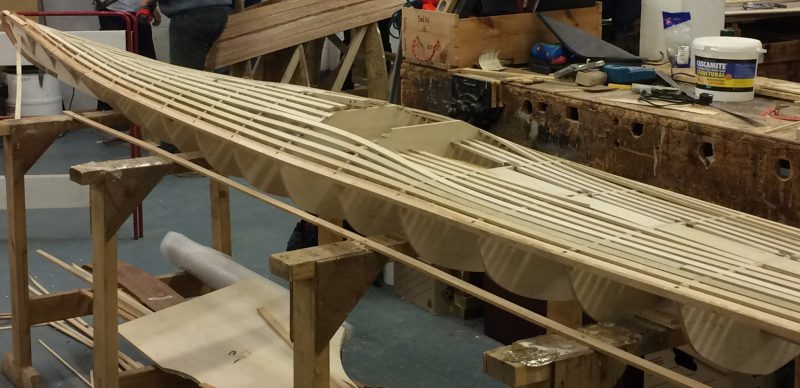
The basic frame of the kayak. The photos below show the hull being stripped down.
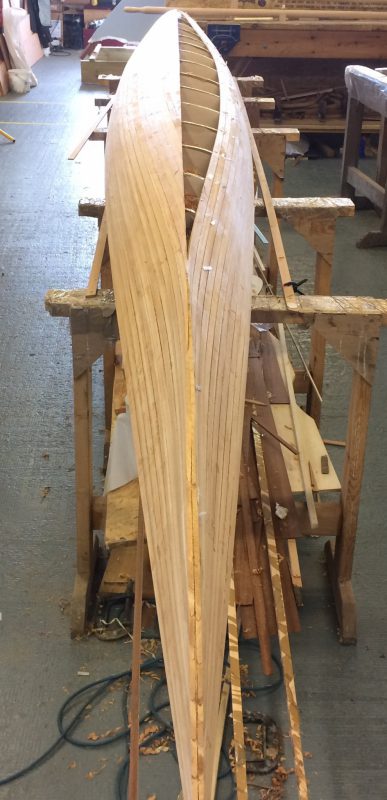
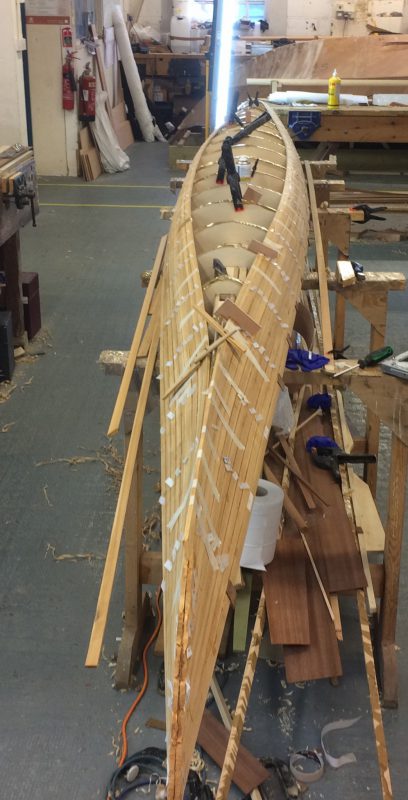
Soft curves and a bright finish
The result is a long and slender kayak with soft curves and, with an “upswept bow” providing a very fine entry point at the waterline. The beam at the cockpit is fairly narrow at just 20” and there is a transition from a rounded foredeck to a flat aft deck behind the cockpit. The flat stern deck then slips away to the waterline at a rounded stern with raised fin, completing the streamlined look.
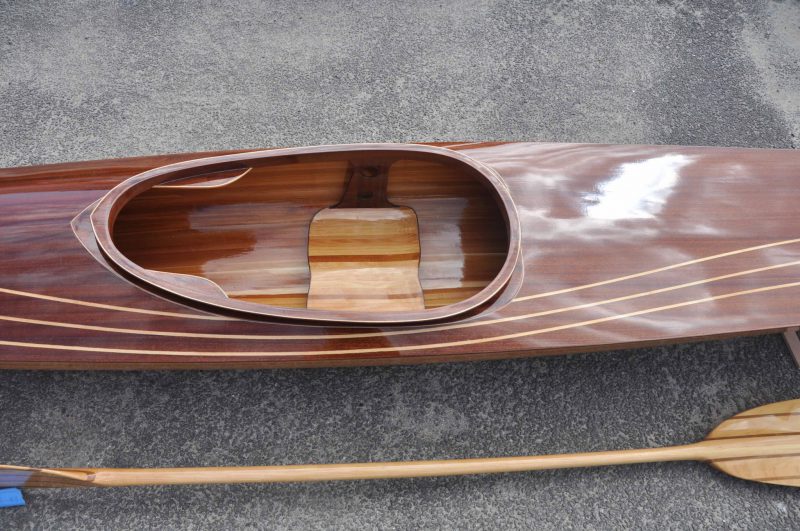
With a Western Red Cedar hull and a cold-moulded Sapele deck the kayak is very strong, offering a great level of performance. The deck is inlayed with three full-length spruce curves to accentuate the flow of the curves from bow to stern. It was amazing to see it taking its final form during the varnishing process, the depth and texture of the different woods working in harmony to great effect.
Despite being suitable for a paddler in the 76 to 86kg range, the kayak only weighs 16kg, making it easy to carry. The first time on the water was on a beautiful sunny day in Lyme Bay with a slight chop. The experience was exhilarating, the kayak is very fast thanks to the long waterline and stiff hull. There is just a slight bow wave from fine entry and it readily picks up waves and holds its line. The final combination of performance and design was better than I could have hoped for and I have spent many happy hours paddling since then.
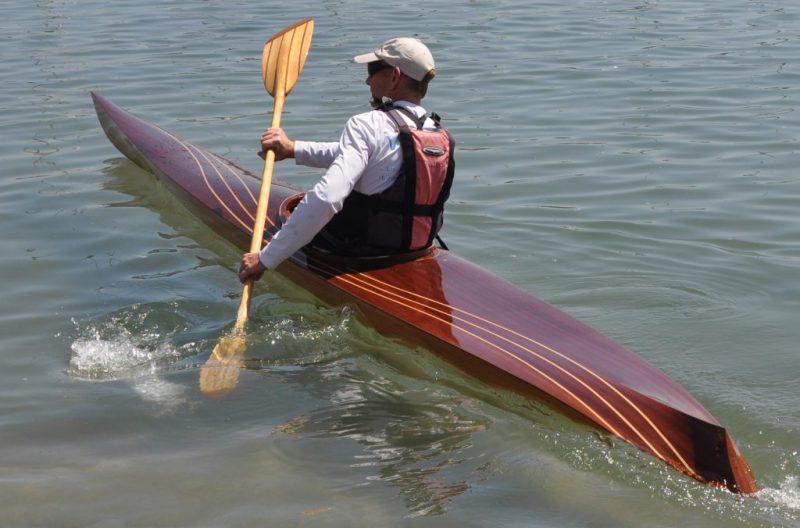
The wood/epoxy advantage
The deck of the kayak is built from three layers of 1.5mm Sapele veneer. These are bonded together with WEST SYSTEM 105 Epoxy Resin® and WEST SYSTEM 205 Fast Hardener®, thickened with silica.
Both the strip planked hull and cold moulded deck were completely sheathed with 80-gramme lightweight glass cloth, which was impregnated with WEST SYSTEM 105 epoxy resin and 207 hardener. The 207 hardener provides a nice clear finish with the added benefit of improved UV resistance. It also cures more slowly, giving me a longer working time, which was very useful when I was sheathing with glass cloth to achieve the bright finish.
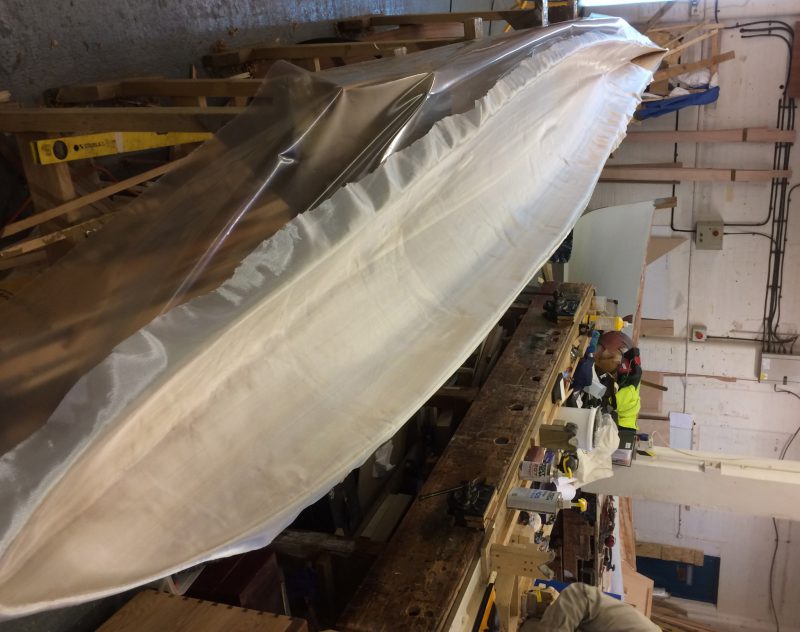
Once the epoxy was cured, I coated it with several layers of two-pack varnish and added further coats of traditional single pack varnish. The final effect is a deep mirror gloss that shows off the wood to great effect, while also providing excellent protection against knocks and scuffs.
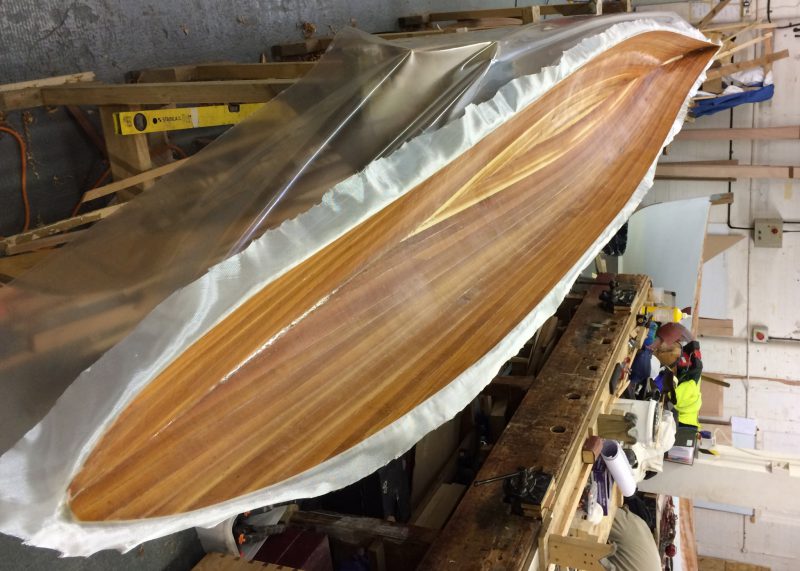
An experience to remember
The boatbuilding course at the Academy was extremely rewarding in all kinds of ways. It was great to learn from excellent teachers and use such well-equipped facilities but there was also great camaraderie and team spirit among all of the students.
Perhaps the most rewarding thing was building a one-off kayak from the concept phase and lofting, right through to launch. Many of the build techniques were rewarding in their own right, including the cold moulding for the deck, which produced a uniform texture that contrasts nicely with the strip-planked lines of the hull. I also enjoyed the experience of inlaying the curved spruce stripes in the deck, which ultimately enhanced the curved contours of the foredeck and the transition to the rounded slipper stern.
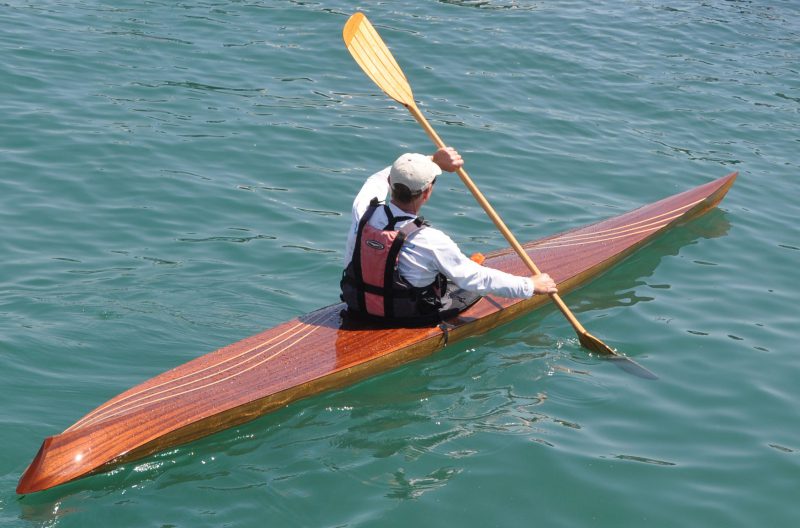
Having done the course and built my kayak, I have many great memories and learning experiences to take away with me. I’d also like to leave one piece of advice for current and future students: whatever you build, enjoy it on the water afterwards, just like I’m enjoying my kayak.
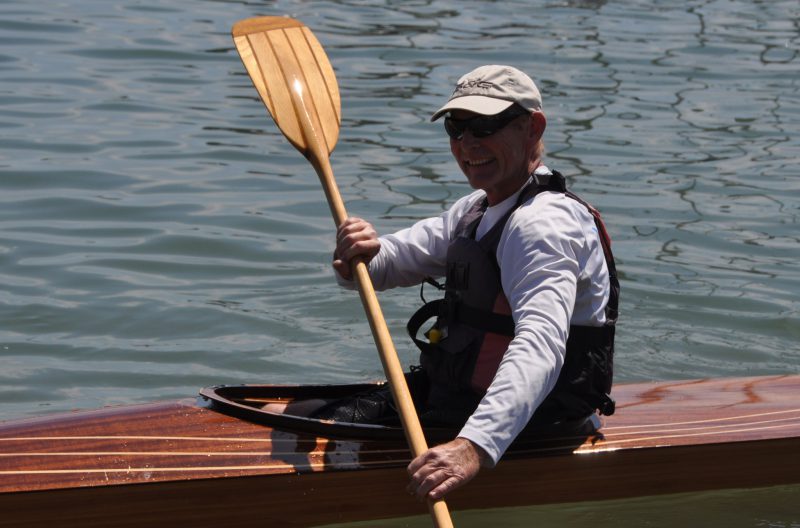
Thank you to Duncan for sharing this story.
To learn more about the Boat Building Academy visit their website.
For the full range of WEST SYSTEM products, visit the West System International website.

